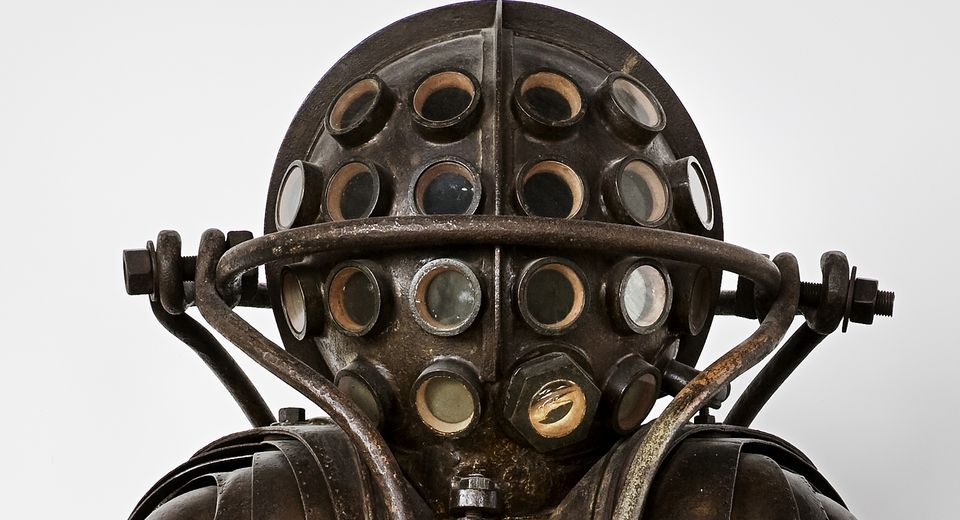Carmagnolle brothers diving suit
Paris
Alphonse and Théodore Carmagnolle, inventors
Designed by the brothers Alphonse and Théodore Carmagnolle in 1882, this impressive articulated diving suit, with its lobster-shell appearance, was intended to enable divers to descend to depths of over 60 metres.
The end of the nineteenth century was a period of great enthusiasm for discovering the seabed, and French and European manufacturers vied with each other in their ingenuity to enable divers to dive ever deeper. As early as 1866, two engineer brothers living in Marseille filed a series of patents aimed at building a new type of equipment, made entirely of metal. They were looking to develop a diving suit capable of withstanding great depths, over 60 metres at the time: to do this, they needed equipment with very high resistance to pressure. It was a Parisian armourer who, in 1882, manufactured this metal shell after more than 12 months' work, according to the plans of the two engineers.
The Carmagnolle brothers created a highly technical and innovative piece of equipment for its time. This steel armour, weighing almost 260 kg, was designed to protect the diver's chest from the pressure of the water at depth. A helmet fitted with 20 small glass portholes ensured excellent underwater vision, while also guaranteeing good resistance. Entirely articulated, and inspired by the shells of crustaceans, the interior allows - in principle - great freedom of movement despite its weight (which reduces at depth) and its apparent rigidity. However, the joints posed a problem: despite hundreds of hours of work, the thin strips of fabric lined with leather fixed between each metal part never managed to ensure a perfect seal.
Long owned by Louis Denayrouze, himself a famous inventor of diving suits, this exceptional prototype was donated to the museum in 1939.
Collection highlight
Discover the must-see works at the Musée national de la Marine.

